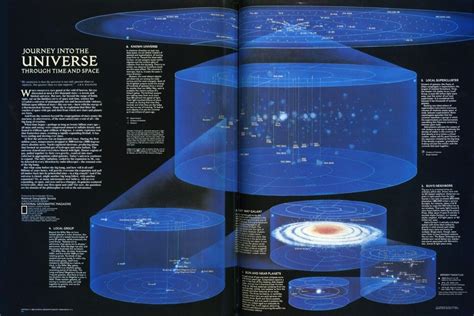Have you ever looked up at the night sky and wondered about the vastness of the universe? Astrophysics is the field of science that seeks to understand the mysteries of the cosmos. In this blog post, we will embark on a journey into the exciting world of astrophysics, where we will delve into the basics of this fascinating subject. From the birth of stars to the secrets of dark matter, from the enigmatic nature of black holes to the dazzling phenomenon of supernovas, we will uncover the wonders that astrophysics has to offer. Additionally, we will explore the expansion of the universe, the search for exoplanets, the role of gravity, and even the possibility of extraterrestrial life. Join us as we unveil the universe and contemplate the new frontiers of astrophysics.
Table of Contents
The Basics of Astrophysics
Astrophysics is a branch of astronomy that deals with the physical properties and nature of celestial bodies and the universe as a whole. It combines the principles of physics and astronomy to study the behavior, composition, and structure of objects in space. As a foundational science, astrophysics explores the fundamental questions about the nature of the universe, from the origins of stars and galaxies to the properties of space and time.
One of the fundamental concepts in astrophysics is gravity, which plays a crucial role in determining the motion and interactions of celestial bodies. The study of celestial mechanics, which involves the application of Newton’s laws of motion and universal gravitation, is essential for understanding the motion of planets, moons, and other celestial objects.
Another key area of study in astrophysics is the electromagnetic spectrum, which includes various forms of radiation such as visible light, radio waves, and X-rays. By analyzing the electromagnetic radiation emitted by celestial objects, astrophysicists can gain insights into their temperature, composition, and other physical properties.
Furthermore, the study of astrophysics often involves the use of advanced technology and instruments, such as telescopes, satellites, and space probes, which enable scientists to observe and study celestial objects in great detail. Advances in technology have greatly expanded our understanding of the universe and have led to numerous discoveries in the field of astrophysics.
Understanding the Birth of Stars
The process of star formation is a complex and fascinating phenomenon that has captured the imagination of scientists and the public alike. Astrophysicists have been studying the birth of stars for centuries, and yet there is still so much we don’t fully understand about this cosmological process. Stars are born from vast clouds of gas and dust known as nebulae, which are the birthplaces of new stars. These clouds are comprised primarily of hydrogen and helium, the two lightest elements in the universe.
Over time, the gas and dust in these nebulae begin to collapse under the force of gravity, causing the material to condense and heat up. As the temperature at the core of the gas cloud rises, nuclear fusion reactions begin to occur, and a new star is born. The process of star formation is a delicate balance of gravitational collapse and the forces of stellar winds and radiation pressure, which can either help or hinder the birth of a new star.
Understanding the birth of stars is crucial to our understanding of the universe and our place within it. Not only do stars serve as the building blocks of galaxies, but they also play a crucial role in the creation of heavy elements that are necessary for the formation of planets and ultimately, life. By studying the birth of stars, scientists hope to gain insight into the fundamental processes that govern the cosmic evolution of galaxies and the universe as a whole.
As our understanding of stellar birth continues to evolve, so too does our appreciation for the beauty and complexity of the cosmos. The birth of stars is a truly awe-inspiring process that reminds us of the grandeur and mystery of the universe, and it will continue to captivate the minds of both scientists and enthusiasts for generations to come.
Exploring the Secrets of Dark Matter
Dark matter has long been a subject of intense curiosity and speculation for astrophysicists, as it is a mysterious form of matter that does not emit or interact with electromagnetic radiation, making it invisible to the entire electromagnetic spectrum, including light. The secrets of dark matter have been an enigma, and its existence has only been inferred through its gravitational effects on visible matter and light. Scientists have been on a quest to understand the nature of dark matter and its role in the universe.
The search for dark matter has led to various experiments and observations aimed at unraveling its mysteries. Researchers have used powerful telescopes and advanced technologies to study the distribution of dark matter in the universe, as well as its influence on the formation and behavior of galaxies and galaxy clusters. The intricate dance between dark matter and visible matter has been an area of intense study, shedding light on the intriguing relationship between the two.
Furthermore, efforts to detect dark matter particles directly have been a focal point of research, with scientists developing sensitive instruments and detectors to capture potential signals from elusive dark matter particles. The pursuit of experimental evidence for dark matter has been a major driving force in astrophysics, with numerous experiments being conducted deep underground and in space, pushing the boundaries of our understanding of the universe.
As our knowledge and technological capabilities continue to advance, the secrets of dark matter are gradually being unveiled, bringing us closer to comprehending this elusive cosmic enigma. The quest to explore and understand dark matter remains one of the most compelling and captivating endeavors in the field of astrophysics, with the potential to revolutionize our understanding of the fundamental nature of the universe.
Unraveling the Mysteries of Black Holes
Black holes are one of the most intriguing and mysterious phenomena in the universe. These massive objects in space exert such strong gravitational pull that not even light can escape from them. The idea of black holes was first proposed by Albert Einstein in his theory of general relativity, but it wasn’t until much later that astronomers were able to gather evidence of their existence.
One of the most fascinating aspects of black holes is their event horizon, which is the point of no return beyond which nothing can escape the black hole’s gravitational grasp. This concept has captured the imagination of both scientists and the general public, leading to numerous theories and debates about what lies beyond the event horizon.
Studying black holes is crucial for our understanding of the fundamental laws of physics and the nature of spacetime. Through the use of advanced telescopes and other observational tools, scientists have been able to gather valuable data about the behavior of black holes and their interaction with the surrounding environment.
Despite the progress in our understanding of black holes, many questions remain unanswered. The nature of singularities within black holes, the potential existence of wormholes connected to other parts of the universe, and the role of black holes in the formation of galaxies are just a few of the mysteries that continue to pique the curiosity of astrophysicists.
The Phenomenon of Supernovas
Supernovas are some of the most spectacular events that occur in the universe. These cosmic explosions are the result of the death of a massive star, and they release an incredible amount of energy in a short period of time. When a star runs out of nuclear fuel, it can no longer sustain its core against the force of gravity, causing it to collapse and then explode in a brilliant display.
There are two main types of supernovas: Type I and Type II. Type I occurs in binary star systems when a white dwarf star gathers mass from its companion star, triggering a runaway nuclear reaction. On the other hand, Type II supernovas are the result of the collapse of a massive star, which leads to the explosion. Both types of supernovas play a crucial role in the formation of new elements and the distribution of these elements throughout the universe.
Scientists study supernovas to gain a deeper understanding of the life cycle of stars and the processes involved in their deaths. They also use supernovas as cosmic distance indicators, allowing them to measure the expansion of the universe and gain insights into its underlying mechanisms. The study of supernovas has greatly contributed to our understanding of the universe and continues to provide valuable information about the nature of cosmic phenomena.
Overall, supernovas are not only awe-inspiring events but also essential for the evolution of the universe. Their impact reaches far beyond the immediate vicinity of their occurrence, shaping the cosmos and driving the ongoing processes that govern the behavior of celestial bodies.
Cosmological Discoveries: Expansion of the Universe
One of the most fascinating aspects of astrophysics is the study of the expansion of the universe. This incredible phenomenon has captured the curiosity of scientists and enthusiasts alike, fueling a quest for understanding the very fabric of our existence.
Through meticulous observation and analysis, researchers have uncovered groundbreaking discoveries that have revolutionized our perception of the cosmos. The concept of an expanding universe has challenged previous beliefs and led to new avenues of exploration in the field of astrophysics.
By delving into the complexities of cosmological expansion, scientists have gained valuable insights into the evolution of the universe, shedding light on its mysterious origins and potential fate. This ongoing pursuit of knowledge continues to unveil intriguing revelations that spark further wonder and awe.
As we continue to unravel the mysteries of the cosmos, the expansion of the universe remains a central focus in astrophysical research, shaping our understanding of the grandeur and intricacies of the celestial realm.
Unveiling the Secrets of Exoplanets
Exoplanets have always fascinated scientists and space enthusiasts alike. These distant planets, located beyond our solar system, hold the key to understanding the potential for life beyond Earth.
With the advancement of technology and space exploration, astronomers have been able to detect and study numerous exoplanets. By using telescopes and specialized instruments, they have been able to uncover valuable information about the composition, atmosphere, and potential habitability of these alien worlds.
One of the most groundbreaking discoveries in exoplanet research is the identification of potentially habitable exoplanets. These are planets that orbit within the habitable zone of their host star, where conditions may be suitable for liquid water to exist. This has sparked excitement and intrigue within the scientific community, as the search for extraterrestrial life becomes more tangible.
As technology continues to evolve, the study of exoplanets will play an increasingly significant role in our understanding of the universe. The secrets of these distant worlds hold the potential to revolutionize our concept of life beyond Earth, and perhaps even lead to the discovery of extraterrestrial life forms.
The Role of Gravity in Astrophysics
Gravity plays a crucial role in shaping the behavior of astronomical objects and the evolution of the cosmos. It is the force that governs the movements of planets, stars, galaxies, and the entire universe. Without gravity, the formation of celestial bodies and the structures of the cosmos would not be possible. The effects of gravity can be seen in the way that planets orbit around their stars, the way that stars form and die, and the way that galaxies interact with each other.
One of the most important concepts in astrophysics related to gravity is gravitational collapse. This is the process by which a massive object, such as a star or a gas cloud, collapses under the influence of its own gravity. This phenomenon is responsible for the birth of stars and the formation of galaxies. Without the force of gravity, these processes would not occur, and the universe as we know it would look vastly different.
Another key aspect of gravity in astrophysics is its role in shaping the structure and evolution of the universe. The force of gravity is responsible for the formation of large-scale cosmic structures such as galaxy clusters and superclusters. Over billions of years, gravity causes these structures to grow and evolve, shaping the distribution of matter in the cosmos. Without the influence of gravity, the universe would be a much more chaotic and uniform place.
Furthermore, the study of gravity in astrophysics has led to important insights into fundamental theories of physics, such as Albert Einstein’s theory of general relativity. This theory describes how gravity arises from the curvature of space and time caused by the presence of mass and energy. It has profound implications for our understanding of the universe, from the behavior of black holes to the expansion of the cosmos.
Astrobiology: Searching for Extraterrestrial Life
Astrobiology, also known as exobiology, is the branch of science that focuses on the study of life in the universe. This interdisciplinary field combines aspects of biology, chemistry, astronomy, and geology to investigate the possibility of extraterrestrial life.
One of the main areas of research in astrobiology is the search for habitable exoplanets. Scientists use telescopes and space probes to identify planets outside our solar system that may have the right conditions to support life as we know it, such as the presence of liquid water.
In addition to searching for habitable planets, astrobiologists study extreme environments on Earth to understand how life can thrive in seemingly inhospitable conditions. This research provides valuable insights into the potential for life to exist in extreme environments on other planets or moons in our solar system.
The ultimate goal of astrobiology is to answer the age-old question: are we alone in the universe? By exploring the potential for life beyond Earth, scientists hope to gain a deeper understanding of our place in the cosmos and the likelihood of finding extraterrestrial life.
The Future of Astrophysics: New Frontiers
The future of astrophysics is a topic that has captivated scientists and enthusiasts alike. As technology continues to advance, the possibilities for exploring new frontiers in the field of astrophysics are endless. From the study of exoplanets to the search for extraterrestrial life, the future of astrophysics holds great promise.
Advancements in technology have opened up new avenues for observation and research. Telescopes and spacecraft are constantly being upgraded, allowing astronomers to peer deeper into the cosmos than ever before. This has led to the discovery of new planetary systems, galaxies, and phenomena that were previously unexplored.
Another exciting frontier in astrophysics is the study of dark matter and dark energy. These mysterious substances make up the majority of the universe, yet their properties and origins remain largely unknown. Understanding dark matter and dark energy could have profound implications for our understanding of the cosmos and the future of the universe.
As we look to the future of astrophysics, it is clear that there are still many unanswered questions waiting to be explored. With the advent of new technologies and research methods, the future of astrophysics holds the promise of unlocking the secrets of the universe and expanding our understanding of the cosmos.





